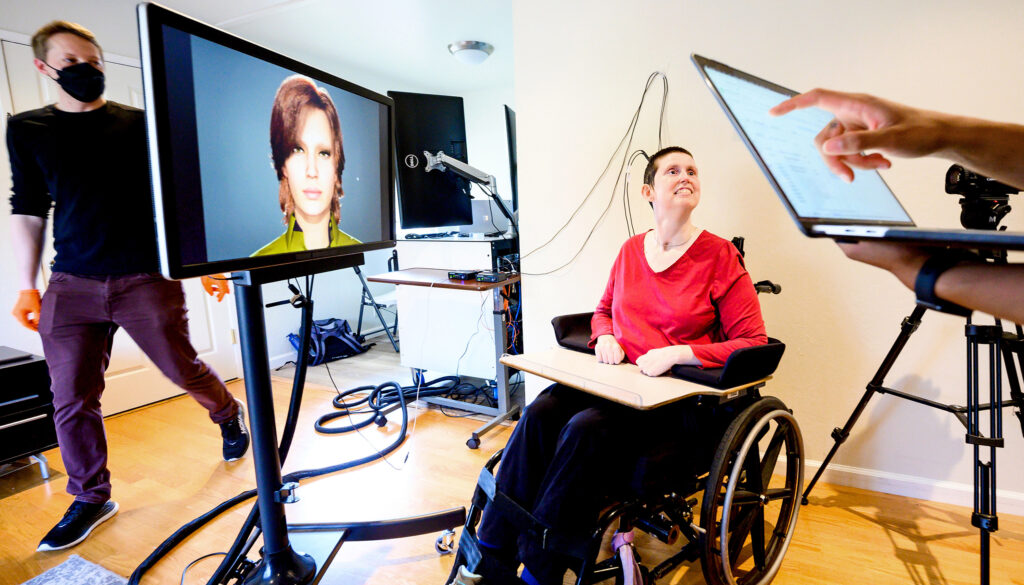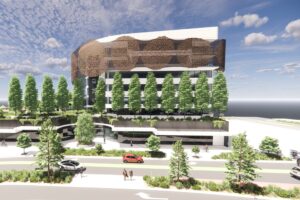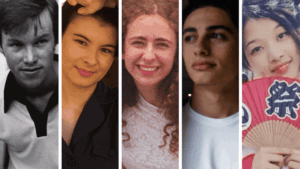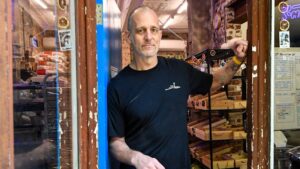
At age 30, Ann Johnson was living a vibrant life. She was a math and physical education teacher at a high school in Saskatchewan, Canada, where she also coached volleyball and basketball. A year earlier, she had welcomed a baby with her new husband and delivered a heartfelt 15-minute speech at their wedding. However, everything changed in 2005 when Johnson suffered a brainstem stroke while playing volleyball with friends. The stroke resulted in extreme paralysis, leaving her unable to speak or move any muscle in her body.
Johnson was diagnosed with locked-in syndrome, a rare condition characterized by near-complete paralysis and the inability to communicate naturally. This condition is most often caused by a stroke or the neurological disorder ALS. For 18 years, Johnson lived without the sound of her own voice until a groundbreaking clinical trial offered her a chance to speak again.
Revolutionary Brain-Computer Interface
The pivotal moment came during a clinical trial conducted by researchers at UC Berkeley and UC San Francisco. The trial aimed to restore communication abilities using a brain-computer interface. According to the researchers, this technology has the potential to significantly improve accessibility for individuals like Johnson.
Understanding Speech in the Brain
In 2015, Gopala Anumanchipalli, then a postdoctoral researcher, collaborated with Edward Chang, a neurosurgeon at UCSF, to study how speech is produced in the brain. Their goal was to understand the process that allows thoughts to be transformed into spoken words.
“We were able to get a good sense of the part of the brain that is actually responsible for speech production,” said Anumanchipalli, now an assistant professor of electrical engineering and computer sciences at UC Berkeley. From this understanding, they developed a computational model to synthesize speech from brain activity, effectively bypassing the broken connection to the body.
The clinical trial began in 2020, with Johnson joining as the third participant in 2022. Although the population of individuals affected by this type of speech loss is relatively small, they are among the most vulnerable in terms of quality of life.
Emotional Milestone
Since her stroke, Johnson has regained some muscle control, including full neck movement, and she can laugh, cry, and smile. She primarily communicates using an eye-tracking system that allows her to spell words on a computer screen, albeit slowly at 14 words per minute compared to conversational speech at 160 words per minute.
Hearing her thoughts vocalized for the first time in nearly two decades was an emotional experience for Johnson. During the trial, she asked, “What do you think of my artificial voice?” sitting beside her husband.
“We didn’t want to read her mind,” said Anumanchipalli. “We really wanted to give her the agency to do this.”
Technological Advancements and Future Prospects
Ph.D. student Kaylo Littlejohn, a co-lead on the study, led the AI modeling efforts to accurately translate Johnson’s brain activity. The team used a recording of her wedding speech to recreate her voice, and an implant connected to a computer translated her brain signals into speech.
While the initial model had an eight-second delay, recent advancements published in Nature Neuroscience have reduced this to about one second using streaming architecture. This allows for real-time translation of brain activity into sound, significantly improving the user experience.
Future of Neuroprostheses
Looking ahead, Anumanchipalli envisions neuroprostheses becoming a standard of care rather than a research experiment. He foresees the development of 3D photorealistic avatars and wireless implants, enhancing the quality of life for users.
In February 2024, Johnson had her implant removed for unrelated reasons but continues to communicate with the research team. She expressed a desire for wireless implants and praised the streaming synthesis approach for giving her a sense of control.
“We need to be able to have neuroprostheses be plug-and-play, so that it becomes a standard of care,” said Anumanchipalli.
Inspiring Hope and Resilience
Johnson aspires to become a counselor in a physical rehabilitation facility, ideally using a neuroprosthesis to communicate with her clients. “I want patients there to see me and to know their lives are not over now,” she wrote. “I want to show them that disabilities don’t need to stop us or slow us down.”
This development not only marks a significant milestone in assistive technology but also serves as a beacon of hope for those living with disabilities, demonstrating that innovative solutions can lead to profound changes in quality of life.





